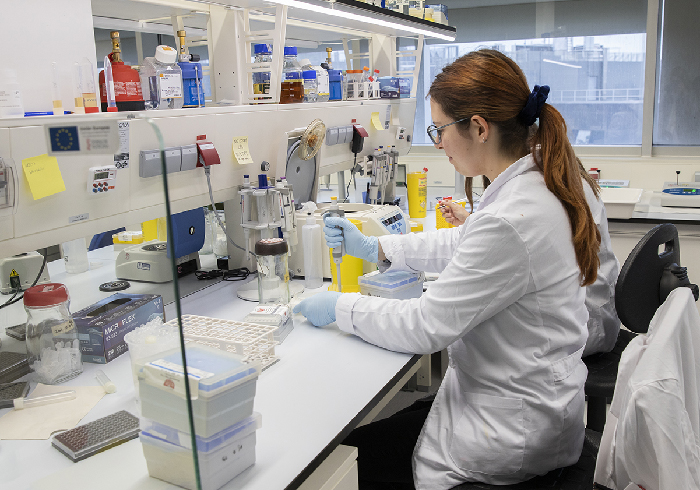Users
Social media
- More details here...
- Address
Parc Científic de la Universitat de València C/
Catedrático Agustín Escardino, 9
46980 Paterna (Valencia) Spain - Email:
iu.i2sysbio@uv.es - Phone:
(+34) 963544810
- Address
Links
New research projects of the State Research Agency

Investigation
New research projects of the State Research Agency

The State Research Agency (AEI) has approved four new projects from our institute in the latest targeted aid call to the challenges of society. In the next three years, I2SysBio research groups will be funded with a total of 892,000 euros. Likewise, two contracts from the Research Personnel Training Program (FPI) will be announced.
In the State Knowledge Generation Program, the projects led by Gustavo Gómez, Santiago F. Elena and Javier Buceta have received funding. Gómez, leader of the Regulatory Networks Mediated by Non-Coding RNA group, is the Principal Investigator of the project “Gene regulatory networks influenced by the environment involved in the control of the stress response in melon (EGReNMel)”. The main objective of EGReNMel is to understand how melon plants respond to stress by integrating processes that occur at three different regulatory scales: small RNAs, messenger RNAs and epigenetic marks. This knowledge can facilitate the development of global and innovative strategies for the protection of agricultural crops.
The project titled “Role of host epicode in the evolution of viral populations” (EPICOVIR) has Santiago F. Elena, leader of the Evolutionary and Systems Virology research group, as principal investigator. A large-scale evolution experiment is proposed to test how virus populations evolve and interact in plants with compromised or enhanced epigenetic pathways, as well as to study the antiviral effect of epigenetic modifications in plants infected by turnip mosaic virus (TuMV). Vicente Arnau, a member of the Theory, Bioinformatics and Computing (TBC) group, also participates in the EPICOVIR project as a researcher.
The project led by Javier Buceta, Senior Scientist at the CSIC who has just joined our institute with his group TheSimBioSys, has also been selected by the AEI. The project “Mechanobiology of Escherichia coli filamentation and remodeling epithelial” aims to understand the mechanical signaling pathways during filamentation of the bacteria E. coli. Likewise, it will study the coupling between the tissue signaling pattern in cellular intercalation events (in space and time).
Finally, within the state program of R&D&I projects “Challenges-Collaboration” aimed at promoting collaboration between research groups and companies, the project titled “Development of EOSAL for its application to different types of genetic studies through massive sequencing in clinic and research”. This research, led by Vicente Arnau (TBC) and Felipe Javier Chaves from Seqplexing, aims to develop kits for different EOSAL (Easy One-Step Amplification and Labelling) applications using NGS (New Generation Sequencing) and their validation, for example, for the detection of somatic and germline mutations, mutations in RNA and DNA simultaneously, or of mutations in a very low proportion and their application to immunotherapy in cancer. Likewise, we want to develop bioinformatic applications for the design of the kits.
Consult the current projects of our institute.


